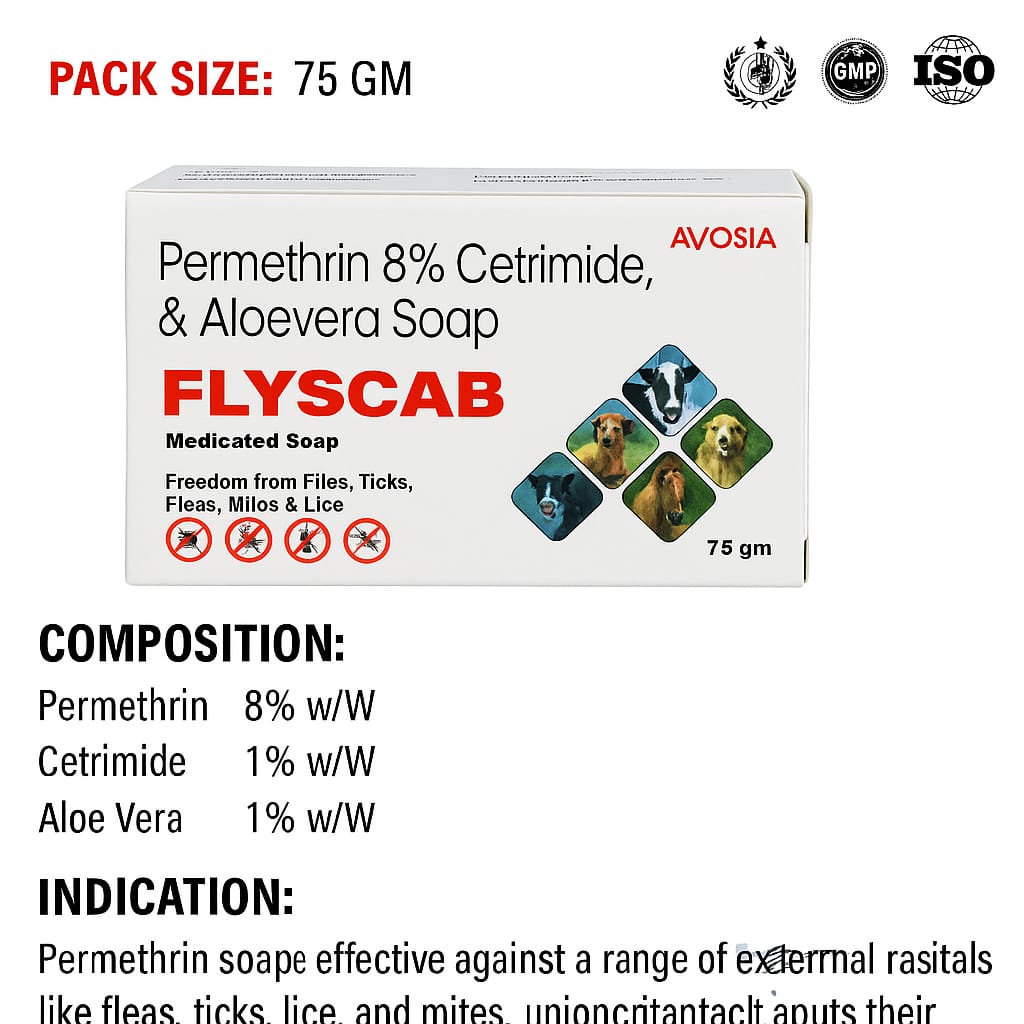
PROGESIA
September 25, 2024
CLOSIA
September 25, 2024FLYSCAB SOAP
Permethrin, Cetrimide & Aloe vera Soap
FLYSCAB – Permethrin 8% Medicated Soap,
Kills Mites Fast. Heals Skin Faster.
Category: Ectoparasiticidal Medicated Soap
Active Ingredient: Permethrin 8% w/w
Form: Topical Bar Soap
Indications: Treatment and control of ectoparasitic infestations such as scabies, lice, ticks, mites, and fleas
🔬 Scientific Profile
FLYSCAB is a clinically formulated medicated soap containing Permethrin 8%, a synthetic pyrethroid with potent insecticidal and acaricidal properties. Permethrin acts on the nervous system of ectoparasites, disrupting sodium channel function and leading to paralysis and death of mites, ticks, and lice. Its high lipid solubility ensures effective penetration into skin layers and parasite cuticle for targeted action.
⚕️ Clinical Mechanism of Action
Neurotoxic Effect on Parasites: Permethrin binds to voltage-gated sodium channels in nerve membranes of ectoparasites, delaying repolarization and causing sustained excitation, paralysis, and death.
Prolonged Residual Action: Due to its stability and adherence to the stratum corneum, FLYSCAB provides sustained protection and prevents re-infestation.
Topical Efficacy: The soap base allows even distribution over affected areas, aiding cleansing, skin penetration, and mechanical removal of mites and debris.
🧴 Formulation Benefits
Medicated Soap Base: Offers dual-action—cleansing and ectoparasite control in one step.
Permethrin 8% Strength: High-concentration formula ensures rapid knockdown of parasites while being safe for recommended use.
Skin-Compatible: Designed to be non-irritating with a pH-balanced base, suitable for regular veterinary hygiene protocols.
🎯 Therapeutic Outcomes
✔ Rapid Relief from Scabies, Mites, and Lice Infestations
✔ Prevention of Reinfestation Through Residual Effect
✔ Soothing Action on Itchy, Inflamed, or Infested Skin
✔ Enhanced Skin Hygiene and Reduced Microbial Load
📌 Indications for Use
Scabies (Sarcoptes spp. and related mites)
Pediculosis (lice infestations)
Tick and flea control (in supportive topical hygiene regimens)
Adjunctive therapy for parasitic dermatitis and mange (in animals or humans, as applicable)






